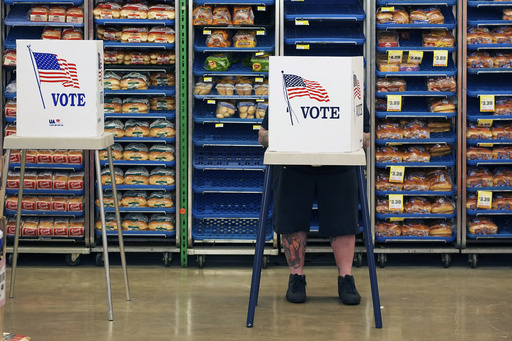
The conclusion of the intense campaign between Kamala Harris and Donald Trump may not arrive by Tuesday, but numerous news organizations that have dedicated substantial time to covering this presidential election are now ready to share concrete results.
Broadcast networks, cable news channels, various digital media outlets, and even a streaming platform like Amazon have set aside Tuesday evening to report on their findings throughout the night.
This awaited moment comes as a relief to the media, which faced weeks of speculation and an arduous day of voting. Polls had consistently indicated a fiercely competitive race. An early glimpse into voter sentiment began to surface just after 5 p.m. Eastern when exit polls indicated widespread dissatisfaction with the current state of affairs in the country.
It remains uncertain who this discontent will be attributed to—Harris, the sitting vice president, or Trump, who was ousted in the 2020 election, as noted by CNN’s Dana Bash.
With limited information, news networks resorted to showing visuals from polling locations and attempting to derive insights from personal accounts. CNN’s Alyssa Farah Griffin compared the election’s dynamics to the results from Dixville Notch, New Hampshire, where the vote tallied evenly at 3-3 for both candidates early on Tuesday.
MSNBC dispatched reporter Jacob Soboroff to engage with voters outside a polling site near Temple University in Philadelphia, where actor Paul Rudd was distributing water bottles. A young voter even requested a photo with Soboroff and Rudd during her wait.
On Fox News Channel, Pete Buttigieg, a supporter of Harris, faced a heated exchange with host Brian Kilmeade during an interview, at one point questioning whether it was an interview or a debate and requesting an opportunity to finish his thoughts.
Former NBC anchor Brian Williams was featured for a special one-night role on Amazon, where he commenced delivering results. Unexpectedly, he was joined by journalist Tara Palmeri, who had been scheduled to report from Trump’s headquarters in West Palm Beach but was barred from entry by Trump’s team, which labeled her a “gossip columnist” on social media. Palmeri informed Williams that her reporting had revealed notable anxiety within Trump’s camp regarding early voter turnout.
To take Palmeri’s place at Trump’s location in Florida, New York Post reporter Lydia Moynihan stepped in. Reports from Axios and Politico regarding similar restrictions on their journalists were not confirmed, nor did the Trump campaign provide immediate comments on the matter.
A strike by technical staff at The New York Times posed a potential threat to one popular election night feature—the Needle, which is used to gauge the probability of both candidates winning based on real-time voting data. On Tuesday, the newspaper stated that the availability of this feature for election night coverage was uncertain due to the strike, which targeted employee engineers who maintain critical computer systems.
Originally launched in 2016, the Needle came under fire for its fluctuating predictions, particularly from supporters of Democrat Hillary Clinton, whom it initially indicated had an 85% chance of victory. However, as the night progressed, the forecast shifted from a “likely” Clinton win to a “toss-up,” and eventually “leaning Trump,” reflecting the reality of Trump’s victory.
The Times indicated it would only publish a live version of the Needle if there was confidence in the stability of the computer systems involved.
Around 650 members of the Times’ Tech Guild initiated their strike early Monday morning.
